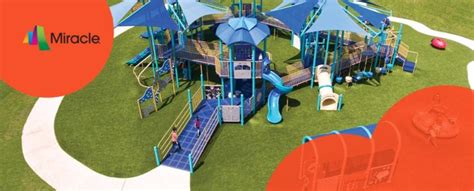In today’s digital age, the importance of outdoor play and physical activity for children cannot be overstated. With screens dominating much of their free time, many children are missing out on the vital benefits that come from engaging in outdoor activities. Encouraging outdoor play not only promotes physical health but also supports cognitive and emotional development, fostering creativity, problem-solving skills, and social interaction. This article explores the numerous advantages of outdoor play, addresses the challenges that prevent children from being active, and provides practical strategies for parents to encourage their children to embrace the great outdoors. By doing so, parents can help ensure a healthier, happier childhood for their kids.
Join domgiz.com as we uncover the details of this topic.
1. Introduction
In our increasingly digital world, where screens dominate children’s attention, the importance of outdoor play and physical activity has reached a critical point. The natural drive in children to run, jump, and explore is being overshadowed by sedentary activities like video games and television, leading to a decline in physical activity levels. This shift raises serious concerns for children’s overall well-being, as regular outdoor play is essential not only for their physical health but also for their mental and emotional development.
Outdoor play offers children a wealth of developmental benefits, including the chance to refine motor skills, forge social bonds, and stimulate their cognitive abilities through open-ended exploration. It nurtures creativity, resilience, and independence—qualities crucial for tackling life’s obstacles. However, many children encounter barriers to engaging in outdoor activities, such as safety concerns and limited access to suitable play spaces.
This article explores the numerous advantages of outdoor play and physical activity for children. It also addresses the obstacles they face in today’s environment and provides practical solutions for parents to promote more time spent outdoors. By recognizing and tackling these challenges, parents can significantly contribute to their children’s well-being, fostering balanced, active, and healthy lifestyles.

2. Benefits of outdoor play and physical activity
Outdoor play and physical activity are essential for a child’s overall development. They promote physical well-being by strengthening muscles and bones, improving coordination, and supporting cardiovascular health. Regular outdoor activity is also crucial for maintaining a healthy weight, reducing the risk of obesity and associated health problems.
Outdoor play offers more than just physical benefits; it’s essential for children’s mental and emotional well-being. Through unstructured play in nature, children can cultivate creativity and imagination. These activities also have a calming effect, reducing stress and anxiety, promoting better sleep, and improving mood. Furthermore, outdoor play fosters social development, encouraging teamwork, communication, and problem-solving skills as children interact with their peers.
Furthermore, outdoor time fosters children’s connection to their surroundings, nurturing a sense of awe and admiration for nature. These advantages, taken together, promote a well-rounded and healthy lifestyle, laying the groundwork for a child’s enduring well-being.

3. Challenges faced by children today
While outdoor play and physical activity offer clear advantages, many children today struggle to participate in these crucial activities. A major hurdle is the rising popularity of digital devices. The captivating allure of video games, social media, and streaming services entices many children towards screens, frequently at the cost of time spent outside.
Urban living has contributed to the decline of outdoor play, as many families reside in neighborhoods lacking safe and readily accessible outdoor spaces. Parental anxieties about neighborhood safety and heavy traffic deter them from letting their children play outside without supervision. Furthermore, the increasing focus on academic success has resulted in packed schedules, leaving little room for free-flowing, unstructured playtime.
The amount of time children spend outdoors can be influenced by weather conditions and seasonal changes, especially in areas with extreme climates. Additionally, the COVID-19 pandemic presented new obstacles, as lockdowns and social distancing measures limited outdoor activities for numerous children.
These barriers, taken together, lead to a decrease in outdoor play. This makes it essential for parents and communities to find innovative ways to promote physical activity in children’s daily routines.

4. Strategies to encourage outdoor play
To foster a love of outdoor play, intentional strategies are key. Making physical activity enticing and readily available for children is paramount. One successful approach involves integrating outdoor play into daily routines. Dedicate specific times each day for outdoor activities, such as a post-dinner walk or a morning visit to the park. This helps establish a consistent pattern of regular physical activity.
A fun and engaging outdoor environment at home can encourage children to spend more time outdoors. Simple additions like a sandbox, swings, or a garden space offer endless possibilities for imaginative play. Organizing playdates or outdoor group activities with friends can further increase its appeal, turning outdoor play into a social event.
Parents can also set a good example by actively participating in outdoor activities with their children. Whether it’s a game of catch, a nature hike, or simply exploring the neighborhood together, these shared experiences can cultivate a love for the outdoors. Moreover, exploring local parks, nature reserves, and community sports programs can provide new and exciting opportunities for children to stay active and engaged.
5. Importance of parental involvement
Parental involvement is crucial for encouraging outdoor play and physical activity in children. By actively participating in these activities themselves, parents set a positive example and create opportunities for bonding and shared experiences. This involvement helps children connect physical activity with fun, family time, and emotional connection, fostering a positive attitude toward physical activity that can last a lifetime.
Furthermore, parents who make outdoor play a priority are better equipped to understand and overcome the obstacles their children encounter. They can champion safer play areas, establish regular outdoor time, and provide their children with the essential resources, including suitable clothing and equipment, to engage in outdoor activities safely and comfortably.
Active participation enables parents to witness and guide their children’s play, fostering the development of crucial social and physical abilities. Through engaging in outdoor activities with their children, parents can instill teamwork, problem-solving skills, and an appreciation for nature. Furthermore, parents can cultivate a sense of curiosity and exploration, deepening their child’s connection to the environment.
Ultimately, parental involvement is not just about facilitating outdoor play; it’s about nurturing a lifestyle that values physical activity, nature, and overall well-being. This commitment can have lasting positive effects on a child’s health and happiness.
6. Community resources and programs
Communities play a vital role in promoting outdoor play and physical activity by offering resources and programs that encourage children to get outside and stay active. Local parks, recreation centers, and sports leagues provide safe and structured environments where children can engage in a variety of physical activities. These community spaces often feature playgrounds, sports fields, and walking trails, offering diverse opportunities for play and exercise.
Many communities also organize seasonal events, such as outdoor festivals, nature walks, and fitness challenges, which can be excellent ways to inspire children to participate in outdoor activities. These events not only promote physical activity but also foster a sense of community and social interaction among families.
In addition to public spaces, community organizations and schools often offer programs specifically designed to encourage outdoor play. Examples include after-school sports teams, summer camps, and outdoor adventure clubs that focus on activities like hiking, biking, and camping. These programs provide structured opportunities for children to explore the outdoors while learning new skills and staying active.
Parents can benefit from connecting with local resources, such as community newsletters or social media groups, to stay informed about upcoming events and programs. By taking advantage of these resources, families can enhance their children’s outdoor experiences and support a healthy, active lifestyle.
7. Conclusion and call to action
Outdoor play and physical activity are crucial for children’s overall development. These activities benefit not only their physical health but also their emotional, cognitive, and social growth. While modern life presents challenges like digital distractions and limited safe play spaces, parents and communities can implement effective strategies to promote active lifestyles.
Parents can foster a love for the outdoors and instill lifelong healthy habits by incorporating outdoor activities into their children’s daily routines. Creating engaging play environments and actively participating in their children’s physical pursuits are also essential. Furthermore, leveraging community resources and programs can provide valuable support and opportunities for children to stay active.
Let’s act now! Encourage your child to spend more time in nature, explore community programs, and lead by example. Working together, we can make outdoor play a normal and fun part of every child’s life, building a brighter and healthier future for all.
domgiz.com

